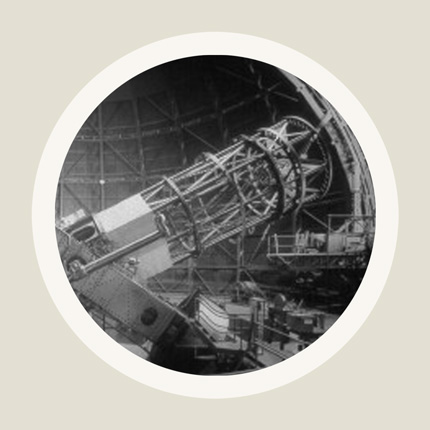Einstein’s equations can do more than just give us models for specific phenomena such as black holes or gravitational waves; they can also be used to describe the universe as a whole. On the basis of general relativity, physicists, mathematicians and astronomers have developed the so-called big bang models. They describe how our universe evolved from an extremely hot and dense early phase to its present state.
A key property of these models is that the universe has to change over time. Einstein’s equation simply do not allow for a stable, eternally unchanging cosmos. According to the big bang models, any universe has to either expand or collapse. Our own universe is expanding, with characteristic consequences for astronomical observation.
Cosmology / Elementary Tour part 1: The expanding universe
Together, billions and billions of stars like our sun form gigantic star systems – galaxies like our own Milky Way galaxy, which probably doesn’t look all that different from the galaxy NGC 4414 shown here: The cosmological models of general relativity paint a rather simple picture of a universe filled with a collection of such […]
Cosmology / Elementary Tour part 2: Reddening galaxies
Cosmic expansion has consequences for the light that reaches us from far-away galaxies – consequences that, in the 1920s, set astronomers on the track of an expanding universe in the first place. For an exact description of these effects, one would need a geometrical picture of the universe’s expansion. This is the proper way to […]
Cosmology / Elementary Tour part 3: The early universe
An expanding universe, with the distances between galaxy increasing all the time, must have been much more dense, and the galaxies much closer together, in the past. The details follow from Einstein’s equations which connect the way expansions runs its course with the properties of whatever matter the cosmos contains. For realistic models, a picture […]
Cosmology / Elementary Tour part 4: A mysterious beginning
From the first millionth of a second on, the big bang models are on fairly safe ground. Standard theories of physics such as the standard model of particle physics tell the researchers how matter behaves under the temperature conditions in question, and the model’s predictions concerning the abundances of light elements and the cosmic background […]
Cosmology / Elementary Tour part 5: Dark matter and dark energy
While the predictive power of the big bang models is impressive, they also show us what we don’t know about the universe. Not only about the distant past, as detailed on the previous page, but also about the present universe: If you look around, all material objects you see are made of electrons and nucleons. […]
Cosmology / Elementary Tour: Conclusion
In the context of Einstein’s general theory of relativity, one can formulate cosmological models, called big bang models. They give a reliable picture for the past 14 billion years of the evolution of our universe, which can be tested by comparing predictions and astronomical observations. Despite successes, there are a number of open questions. The […]










